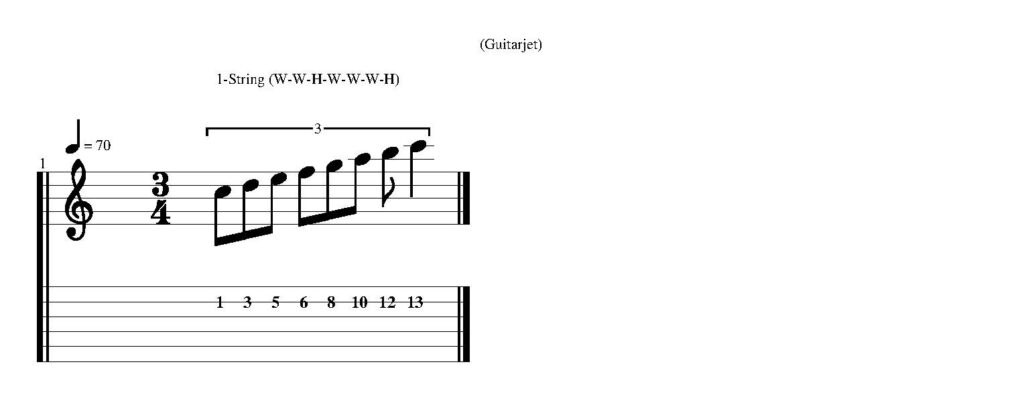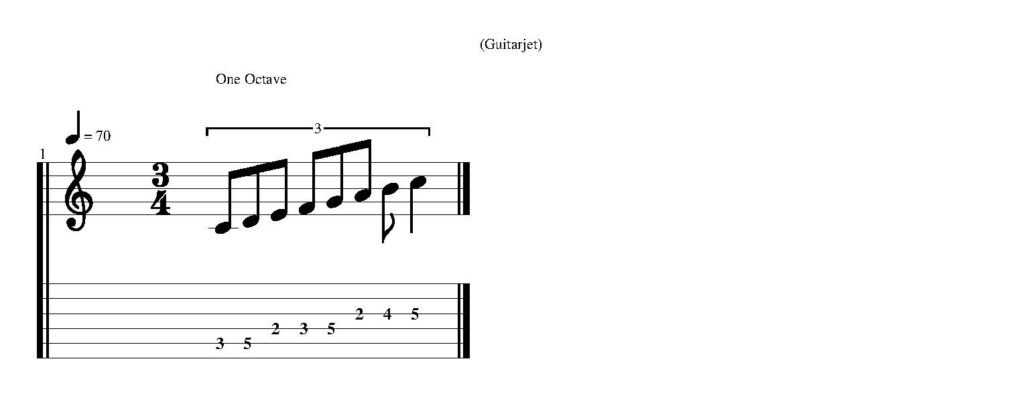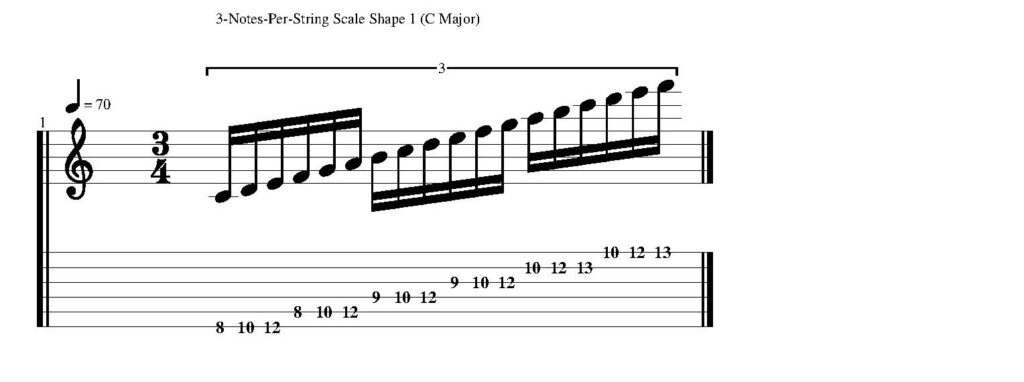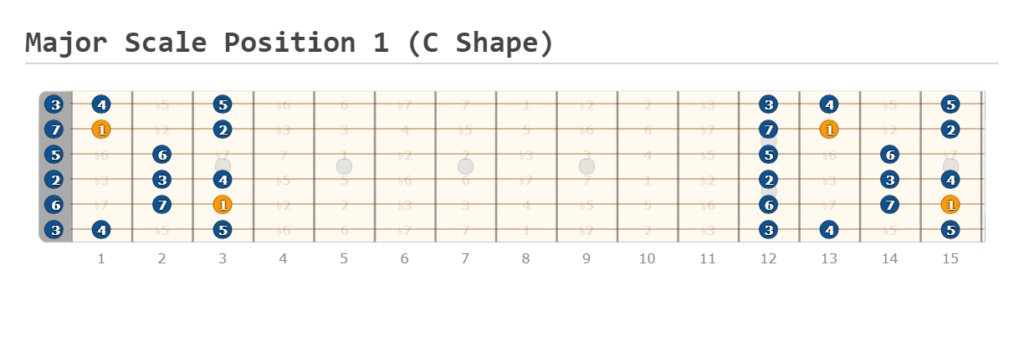This is a simple yet detailed major scale guitar guide.
In this lesson you’ll learn how to:
- Apply the major scale formula on guitar
- Play the major scale using multiple patterns
- Define the major scale
Let’s check it out.
Table of Contents
What is the major scale?
The major scale is the most important scale in Western harmony. It’s often called the “mother of all scales” because many other scales are built from it in popular music, particularly the 7 modal scales.
It’s also the most common scale used to build diatonic chord progressions.
The Major Scale Formula
The major scale formula is 1-2-3-4-5-6-7. These numbers represent the scale degrees, or intervals, that make up the major scale.
For example, if you apply the major scale formula to the root note “C”, you’ll get the C major scale: C-D-E-F-G-A-B.
Whole-Step / Half-Step formula
It’s also important to look at the major scale formula using whole steps (W) and half steps (H).
Building the major scale with whole and half steps gives you:
W-W-H-W-W-W-H
Knowing this formula makes it easy to construct a major scale on a single string. It also helps you identify the distance from 1 degree of the major scale to its next degree.
For example, you can see that the 1st degree of the major scale is a whole step away from the 2nd degree of the scale, the 2nd degree is a whole step away from the 3rd degree, the 3rd degree is a half step away from the 4th degree, and so forth.
How to Play The Major Scale on Guitar
Here you’ll learn 4 different ways to play the major scale on the guitar. Major scale construction is easier to understand when you look at multiple positions and shapes on the fretboard.
All of these examples use the C major scale, because it’s the most common major scale.
Single String Shape
Playing a single-string major scale pattern is the easiest way to learn its interval structure, note names, and whole-step / half-step formula. This is played starting from the root note C on fret 1 of the B string, and ending on the octave at fret 13.

Octave Shape
The one-octave major scale shape is easy to move to different root notes or fretboard positions. It’s also an easy way to visualize the major scale intervals, 1-2-3-4-5-6-7, in one position.

3 Notes-Per-String Shape
You can build 3 notes-per-string-scale shapes from all 7 degrees of the major scale. These shapes make it easier to compose music and improvise across the entire fretboard.
Here are the other 3 notes per string scales.

CAGED Shape
CAGED major scale shapes are derived from the 5 standard open major chords: C, A, G, E, and D.
CAGED shapes are what guitar players refer to when talking about the 5 major scale positions on the guitar. They make it easy to construct arpeggios and identify the intervals surrounding major chord shapes.

Major Scale Guitar Patterns PDF
Here are the major scale patterns, including tabs and notation.
The PDF includes these patterns:
- Single-string
- One octave
- 3 notes-per-string
- CAGED (5 major scale positions)

